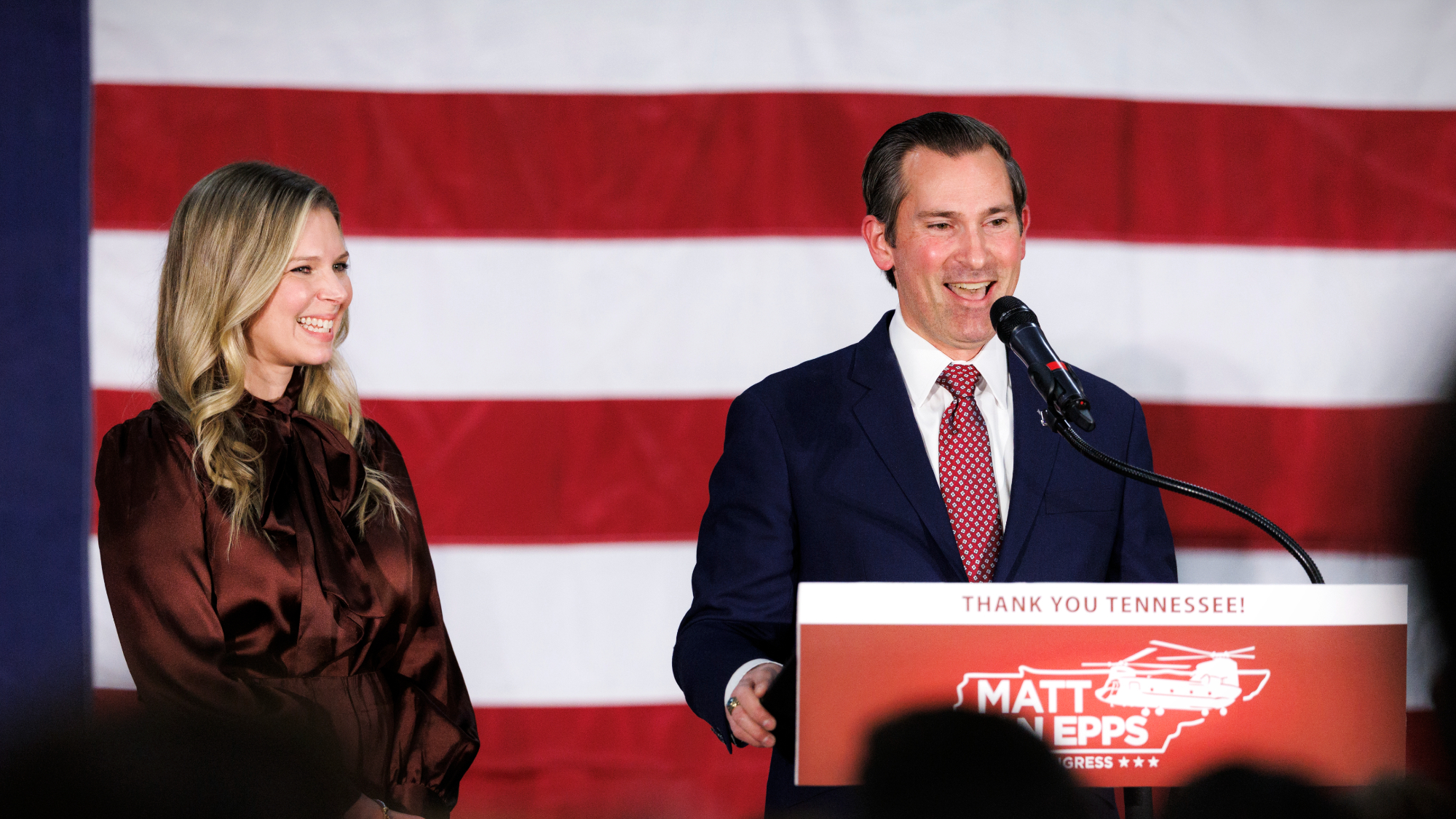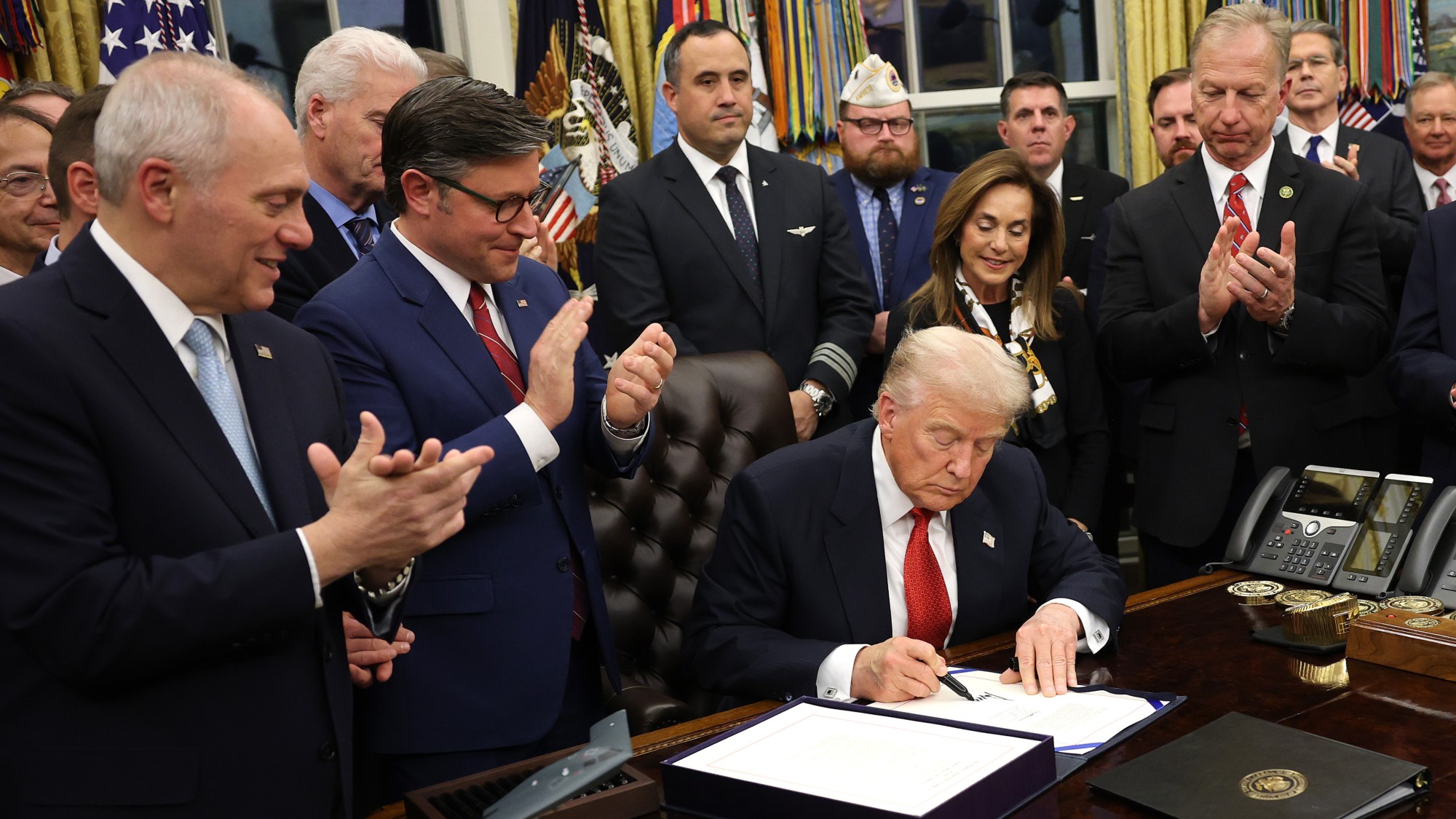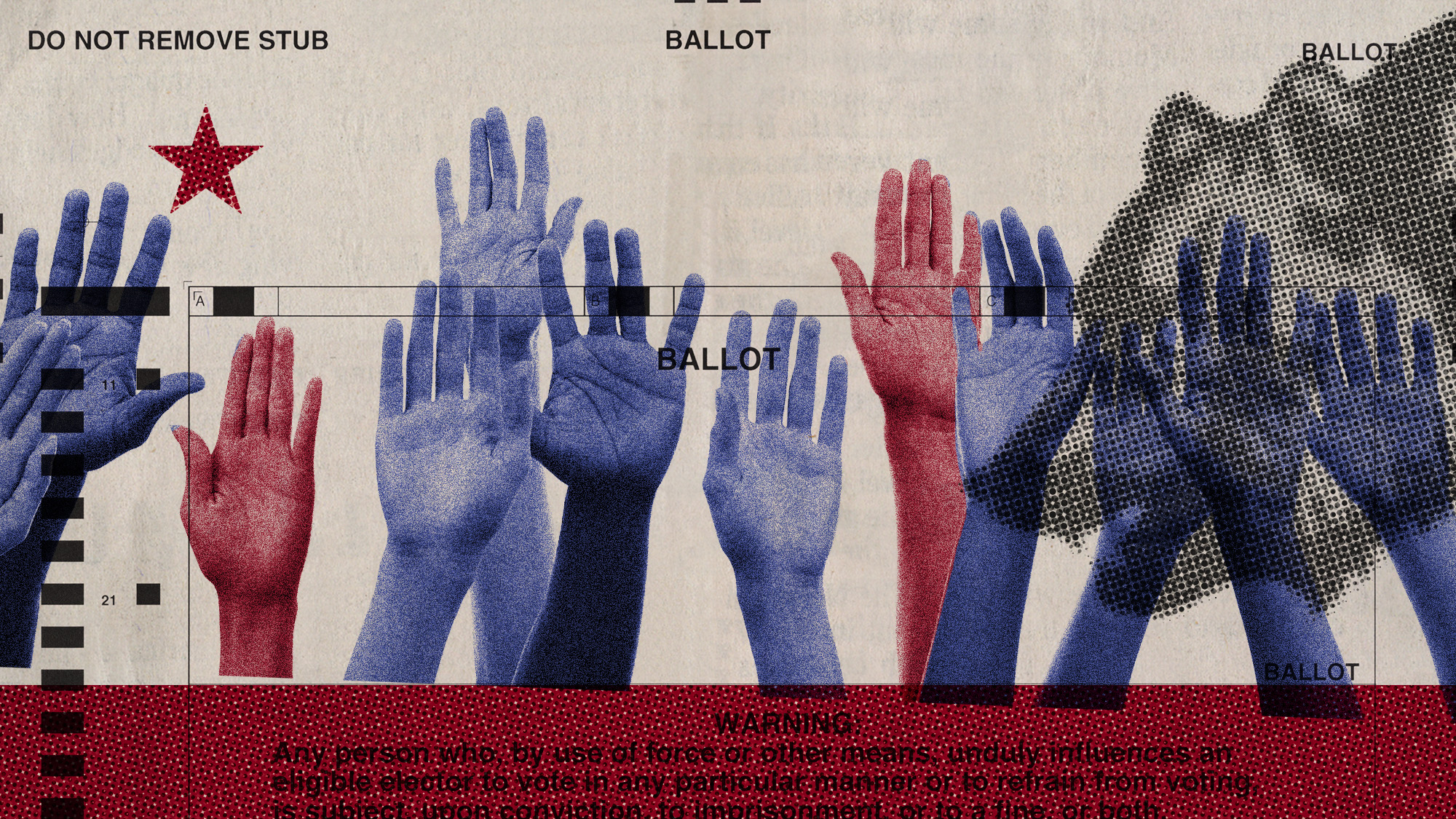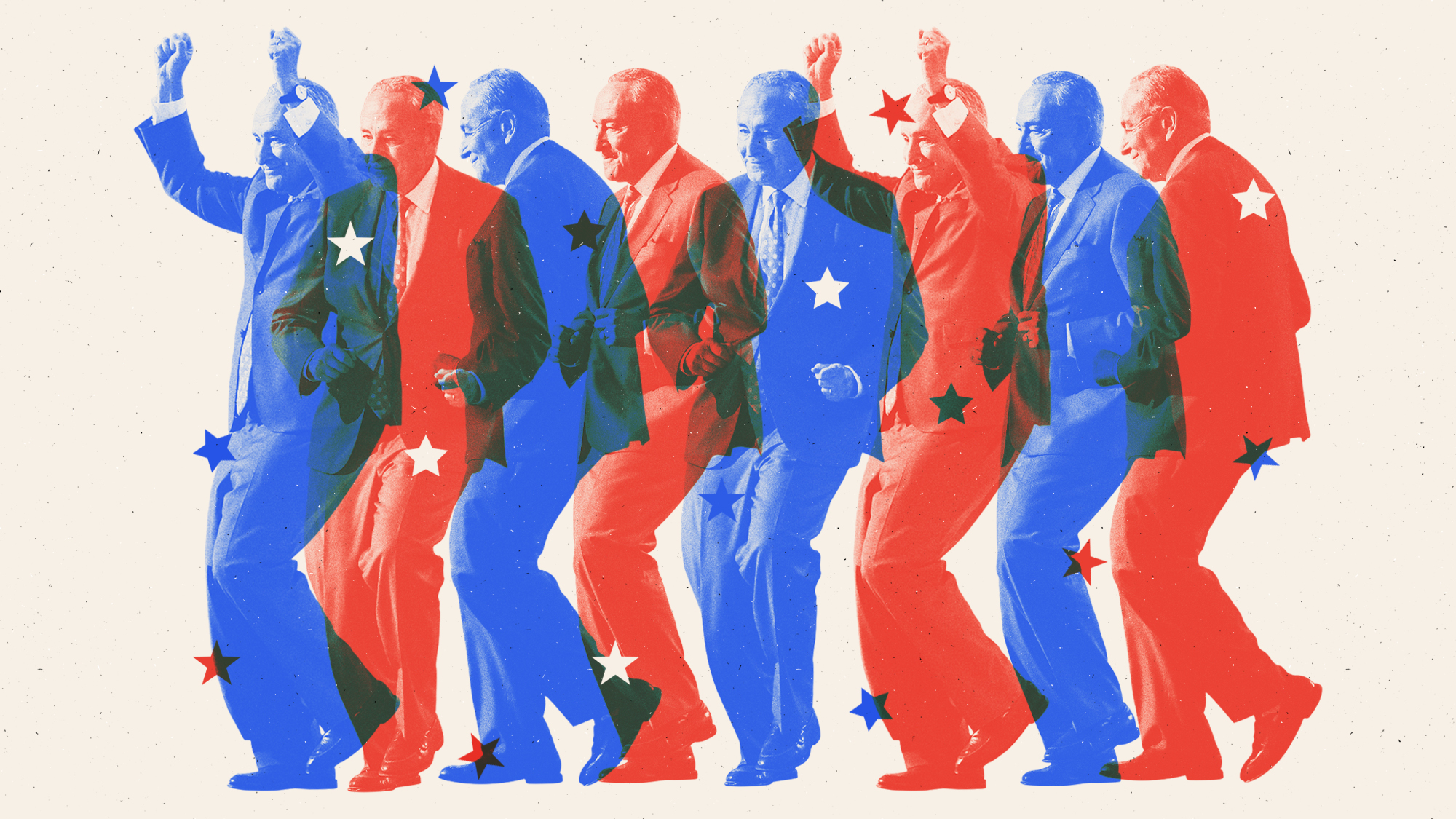A nation moving apart
Americans are increasingly sorting themselves into communities with shared politics. Is this bad for democracy?

Americans are increasingly sorting themselves into communities with shared politics. Is this bad for democracy? Here's everything you need to know:
How politically segregated is the U.S.?
Democratic and Republican voters are now more geographically clustered within states than at any point since the Civil War, according to a recent study by economists at the University of Maryland and Northwestern University. Nearly 80% of Americans today live in a state where a single party controls both the governorship and the legislature. And there are also sharp partisan divides within states. The Cook Political Report rates about 81% of the country’s 435 congressional
districts as noncompetitive for 2024, up from 58% in 1999. That’s in part
because of gerrymandering, explains analyst Dave Wasserman, but mostly because "the electorate has simply become much more homogeneous" in many districts. A 2021 Harvard study found at least 98% of Americans live in census tracts with some level of partisan segregation. For about 25 million voters, segregation is so extreme that only 1 in 10 neighborhood encounters is likely to be with a supporter of the opposite party. "Even within a neighborhood, Democrats and Republicans are separating from each other a little bit," said study co-author Ryan D. Enos. "There’s something pretty fundamental going on here."
What’s driving geographic polarization?
Some Americans deliberately move for political reasons, such as objections to new state laws on abortion, firearms, or LGBTQ rights — and, in recent years, Covid restrictions. Lynn Seeden, a 59-year-old portrait photographer from Orange County, California, relocated to the Dallas–Fort Worth area in 2021. At her first stop for gas in Texas, "people weren’t wearing masks, nobody cared," she told NPR. "It’s kind of like heaven on earth." In one March poll, 40% of Americans said they were somewhat or very likely to relocate to a state that better fit their political beliefs. But research suggests few move solely for political reasons. A Census survey found 84% of Americans who moved in 2022 did so for jobs, housing, or family. Still, partisan sorting happens anyway because many pocketbook concerns overlap with political ones. In 2022, 817,669 people left California, 545,598 left New York and 344,027 left Illinois — mostly to low-tax, lower-cost red states such as Florida and Texas, which gained 738,969 and 668,338 new residents respectively. And geographical polarization is not simply a result of people moving, but also of long-term changes within the two parties and their constituencies.
The Week
Escape your echo chamber. Get the facts behind the news, plus analysis from multiple perspectives.

Sign up for The Week's Free Newsletters
From our morning news briefing to a weekly Good News Newsletter, get the best of The Week delivered directly to your inbox.
From our morning news briefing to a weekly Good News Newsletter, get the best of The Week delivered directly to your inbox.
What kind of changes?
Before the 1970s, the major parties were far less ideologically uniform. The Northeast had plenty of socially liberal “Rockefeller Republicans,” while the South had many socially conservative Democrats. But Democratic involvement in civil rights legislation led some white Southerners to switch parties, and the culture wars of the 1970s and ’80s sorted liberals into the Democratic Party and conservatives into the GOP. Over recent decades, the urban/rural divide between the parties has also expanded into a chasm. In the 2020 presidential election, Joe Biden won 91% of the country’s most populous counties, while Donald Trump took more than 2,500 of the remaining 3,000 counties. Increasingly, Democrats are higher-educated city dwellers who work in white-collar jobs, while more of the rural white working class has trended Republican.
Is partisan sorting a problem?
For individuals, it can feel comforting to live among people with similar beliefs and backgrounds, and under a state government that enacts policies they support. But such segregation could be bad for the nation’s political health. "Groups of like-minded people tend to become more extreme over time in the way that they’re like-minded," said Bill Bishop, author of The Big Sort. Such clustering can reinforce the sense that people outside the bubble are the enemy: In a 2022 Pew survey, majorities of Democrats and Republicans said they viewed members of the other party as more "immoral" and "dishonest." Under half in each party said the same in 2016. With fewer voters in the middle, lawmakers have less incentive to reach across the aisle and compromise. And with less compromise and experimentation needed, states increasingly emulate policies enacted by other states controlled by the same party — or follow the agenda of partisan interest groups such as the National Rifle Association. "The old phrase 'all politics is local' no longer applies to the political parties," said political scientist Jacob Grumbach, "but it does apply to American political institutions."
Can this polarization be reduced?
Not easily. Party affiliation has become as much a cultural identity, with its own set of lifestyle preferences, as it is a set of political beliefs. Biden, for example, won 85% of U.S. counties with at least one Whole Foods in 2020, but only 32% of those with a Cracker Barrel. Political scientist Lee Drutman argues that a radical election rethink is needed to "cool the heated polarization that is currently breaking our democracy." He’s in favor of scrapping single-member House districts and replacing them with larger multimember districts, with seats parceled out according to the percentage of the vote that each party receives. That system, known as proportional representation, would increase the number of competitive seats and force candidates to reach beyond their party’s base. Such reforms are a long shot, Drutman admits. But the U.S. is "in uncharted territory," he notes. "It’s time to take alternatives seriously while we still have time to consider them."
Transgender exiles in America
For many transgender people, the question of whether to move to another state has taken on newfound urgency. Laws banning hormone treatments and surgeries for trans-identifying minors have been enacted in at least 20 states in recent years; seven restrict Medicaid coverage of such treatments for adults. At least 10 have adopted laws barring people from bathrooms that don’t correspond to their birth-assigned sex. It isn’t yet clear whether such laws have sparked a wave of relocations. But in a March Washington Post/KFF survey of transgender Americans, 27% said they had moved to a new neighborhood, city, or state in search of a more accepting place to live. Some families of trans-identifying children have felt compelled to relocate. Earlier this year, the Noble family — whose 16-year-old son Julien is trans — moved from red Iowa to blue Minnesota. "We’ve been [in Iowa] our whole lives," said mom Jennie Noble. "But when it came down to it, we have to support our son. We have to keep him safe."
A free daily email with the biggest news stories of the day – and the best features from TheWeek.com
This article was first published in the latest issue of The Week magazine. If you want to read more like it, you can try six risk-free issues of the magazine here.
-
 Is Trump in a bubble?
Is Trump in a bubble?Today’s Big Question GOP allies worry he is not hearing voters
-
 GOP wins tight House race in red Tennessee district
GOP wins tight House race in red Tennessee districtSpeed Read Republicans maintained their advantage in the House
-
 Looming drone ban has farmers and farm-state Republicans anxious
Looming drone ban has farmers and farm-state Republicans anxiousIN THE SPOTLIGHT As congressional China-hawks work to limit commercial drone sales from Beijing, a growing number of conservative lawmakers are sounding an agricultural alarm
-
 US government shutdown: why the Democrats ‘caved’
US government shutdown: why the Democrats ‘caved’In the Spotlight The recent stalemate in Congress could soon be ‘overshadowed by more enduring public perceptions’
-
 A crowded field of Democrats is filling up the California governor’s race
A crowded field of Democrats is filling up the California governor’s raceIn the Spotlight Over a dozen Democrats have declared their candidacy
-
 Revisionism and division: Franco’s legacy five decades on
Revisionism and division: Franco’s legacy five decades onIn The Spotlight Events to mark 50 years since Franco’s death designed to break young people’s growing fascination with the Spanish dictator
-
 Will Chuck Schumer keep his job?
Will Chuck Schumer keep his job?Today's Big Question Democrats are discontented and pointing a finger at the Senate leader
-
 GOP retreats from shutdown deal payout provision
GOP retreats from shutdown deal payout provisionSpeed Read Senators are distancing themselves from a controversial provision in the new government funding package

